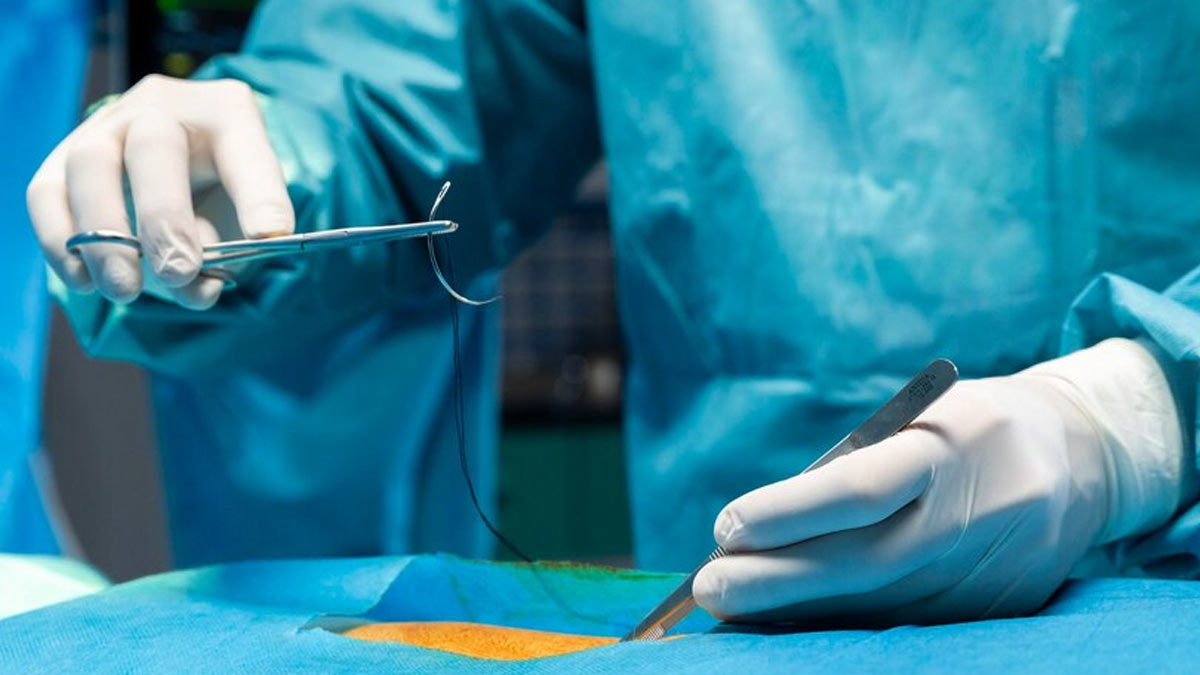
Incisions, integral to surgical interventions, necessitate meticulous attention and care post-operation to ensure favourable healing outcomes. Effective wound management involves employing appropriate closure techniques and implementing strategies to minimize complications and expedite recovery.
Table of Content:-
Exploring Closure Methods: Sutures vs. Staples
Surgeons utilize two primary closure methods for incisions: sutures and staples, each offering unique benefits and considerations.

Sutures
Commonly referred to as stitches, sutures involve delicately sewing the skin together using surgical thread. The choice between absorbable and nonabsorbable stitches depends on various factors, including the location of the wound and the anticipated healing trajectory. While absorbable stitches naturally dissolve over time, nonabsorbable stitches require removal by healthcare professionals once the wound has sufficiently healed.
Staples
Linear wounds, particularly those on areas like the scalp, arms, or legs, often benefit from the application of surgical staples. Comprised of stainless steel or titanium, these fixtures are swiftly applied using specialized staplers, facilitating expedited closure and minimizing bleeding. Individuals with metal allergies may receive plastic staples as a suitable alternative.
Also Read: Winter Pre & Post-Op Care: Essential Precautions for Knee Surgery
Understanding Itching During Wound Healing
Itching, a common occurrence during the wound healing process, stems from intricate biological mechanisms associated with tissue repair and inflammatory responses.
Navigating the Healing Stages and Understanding Itching Causes
The progression of wound healing unfolds across four distinct stages:
- Hemostasis and Clotting: Initial clot formation serves to staunch blood flow, kickstarting the healing cascade.
- Inflammation: Inflammatory cells such as neutrophils and macrophages mobilize to cleanse the wound, releasing histamines and cytokines that contribute to itching sensations.
- Proliferation and Repair: Characterized by tissue regeneration and collagen synthesis, this phase often coincides with itching as nerve connections regenerate.
- Maturation: Collagen undergoes maturation, culminating in scar formation, which gradually softens and flattens over time.
Also Read: Weight Management: 7 Reasons To Reconsider Weight Loss Surgery
Implementing Relief Strategies and Optimal Wound Care
While itching can pose discomfort, several strategies exist to alleviate symptoms and promote effective healing:
- Cold Compresses: Applying cold compresses intermittently provides relief by numbing nerve endings and reducing inflammation.
- Topical Creams: Consultation with healthcare professionals facilitates the selection of appropriate anti-itch creams or ointments, addressing discomfort without compromising the healing process.
- Avoiding Scratching: Resisting the urge to scratch is paramount, as it can introduce bacteria and impede the healing process.
Essential Tips for Stitches Care
Ensuring proper wound care practices is essential for optimal recovery:
- Adherence to Medical Advice: Strict adherence to specific care instructions provided by healthcare providers is crucial for promoting healing and preventing complications.
- Maintaining Cleanliness: Regularly cleaning the wound area with mild soap and water helps prevent infection, while ensuring it remains dry and free from excess moisture.
- Protective Measures: Employing sterile dressings aids in shielding the wound from contaminants, reducing the risk of infection and minimizing physical strain or trauma.
Recognizing Signs for Medical Attention
Vigilance for signs of complications is imperative, prompting timely intervention:
- Infection Indicators: Swelling, pus, increased pain, and warmth around the wound signify potential infection and warrant medical evaluation.
- Bleeding: Breakage of stitches or excessive bleeding necessitates immediate medical attention to address potential complications.
- Allergic Reactions: Prompt medical consultation is essential if signs of allergic reactions, such as rash, itching, or swelling, manifest, ensuring appropriate management and alleviation of symptoms.
Bottomline
A comprehensive understanding of wound closure techniques, itching during healing, and diligent wound care protocols empowers individuals to navigate the postoperative period with confidence, facilitating optimal recovery outcomes and promoting overall well-being.
Also watch this video
How we keep this article up to date:
We work with experts and keep a close eye on the latest in health and wellness. Whenever there is a new research or helpful information, we update our articles with accurate and useful advice.
Current Version